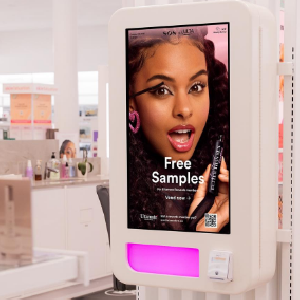Rewards for Free Samples
In an age where consumerism thrives and the quest for quality products intensifies, brands are constantly looking for innovative ways to engage with their audience. One such method that has gained popularity is offering free samples. These not only serve as a promotional tool but also increase customer loyalty through reward systems. This article delves into the intricacies of rewards for free samples, covering the various mechanisms, benefits, and best practices to maximize their effectiveness.
Throughout this article, readers will discover how brands leverage free samples to gather consumer feedback, enhance product visibility, and create sustainable customer relationships. By the end of this piece, you will understand the significance of rewards programs in the landscape of free samples and how they can be optimized to suit modern marketing strategies.

Understanding the Concept of Free Samples
Free samples are small portions of a product that companies offer at no cost to potential customers. This strategy allows consumers to try before they buy, minimizing the risk associated with purchasing new products. Companies often use free samples as a means to boost sales, gather data, and enhance brand recognition.
Types of Free Sample Programs
- In-Store Sampling: Customers receive samples at retail locations, often accompanied by promotions that encourage immediate purchases.
- Online Promotions: Brands may distribute free samples through their websites or social media channels, requiring consumers to sign up or engage for access.
- Membership Rewards: Consumers join loyalty programs for exclusive access to free samples, enhancing the brand-consumer connection.
The Importance of Free Samples in Marketing
Free samples play a crucial role in marketing strategies by enabling brands to cut through the noise in highly competitive markets. They provide a tangible experience for consumers, leading to heightened engagement and trust. Furthermore, free samples assist in generating valuable customer data which can inform future marketing strategies.
The Role of Rewards Programs
Combining free samples with a rewards program amplifies the benefits for both brands and consumers. A rewards program allows brands to foster community and encourage repeat business, providing a structured way to reward loyalty.
How Rewards Programs Function
Typically, customers earn points through purchases or by promoting brand engagement (e.g., sharing on social media). These points can be redeemed for discounts, exclusive products, or even additional free samples. This gamification of shopping not only incentivizes purchases but also fosters a community around the brand.
Key Elements of an Effective Rewards Program
- Ease of Use: The program should be simple to understand and easy to navigate for participants.
- Clear Benefits: Clearly outline the rewards and how they can be earned to keep customers motivated.
- Regular Communication: Maintain engagement with customers through regular updates and personalized offers.
Measuring Success
The success of free sample and rewards programs can be assessed through various metrics, such as customer retention rates, the volume of samples distributed, and overall sales growth. Monitoring these metrics will help brands refine their strategies and ensure long-term success.
Creating Customer Loyalty Through Free Samples
Free samples not only attract new customers but also serve as an essential tool for maintaining loyalty. Customers feel valued when they receive samples or rewards in return for their engagement, fostering a deeper connection with the brand.
Strategies for Retaining Customers
- Personalization: Tailor rewards and sample offers based on individual customer preferences and purchase history.
- Exclusive Offers: Provide samples that are exclusive to loyalty program members to create a sense of belonging.
- Feedback Systems: Encourage customers to provide feedback on samples, enhancing product development and consumer satisfaction.
Best Practices for Implementing Free Sample Programs
When launching a free sample program, companies should consider implementing best practices to maximize effectiveness:
- Clearly Define Objectives: Understand the primary goals of the program, whether it is increasing brand awareness or gathering consumer data.
- Targeted Distribution: Focus on distributing samples to relevant demographics to increase the likelihood of conversion.
- Utilize Partnerships: Collaborate with retailers or influencers to broaden reach and enhance credibility.
The Future of Free Samples and Rewards
As consumer preferences evolve, so will the strategies for free samples and rewards. Sustainability and ethical practices are becoming increasingly important, and programs that align with these values will likely gain traction. Furthermore, incorporating technological advancements such as AI and data analytics can help refine targeting and enhance customer experiences.
Trends to Watch
- Virtual Sampling: Innovative ways to experience products digitally may take precedence, especially in a post-pandemic world.
- Enhanced Personalization: Utilizing customer data for hyper-targeted marketing efforts will become more prevalent.
- Social Media Integration: Expanding free sample programs through social media channels will allow for increased outreach and engagement.
In conclusion, rewards for free samples represent a powerful marketing strategy that benefits both brands and consumers. By effectively implementing these programs, companies can develop lasting relationships with customers, enhance their brand image, and ultimately drive sales. As we move forward, keeping abreast of trends and continually optimizing strategies will ensure sustained success in this competitive landscape. For more insights, check out articles on reward systems and the economics of sampling.
